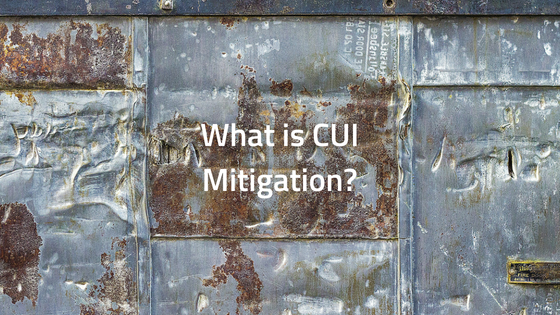
CUI mitigation is an extremely important part of any industrial environment. Since CUI can occur in just about any environment, companies need to be proactive about protecting their equipment before the problem gets out of hand. So what does CUI mitigation really look like? We’ll cover the basics here.
What is CUI?
Before you can understand CUI mitigation, you first have to understand CUI. CUI stands for Corrosion Under Insulation. It refers to any corrosion that takes place on industrial equipment that is normally covered by an insulating layer. Most often this has to do with air conditioning and refrigeration units, or high pressure systems that produce excessive heat. Insulating foam or coverings are placed over the pipes in these systems to keep the system efficient and to protect workers from accidental burns. Unfortunately, the tiny space between the pipe and the insulating material can create the perfect environment for rampant corrosion. Even in applications where the pipes themselves may not gather condensation during operation, it is also possible for outside moisture to seep into the space through the insulator. Over time, this corrosion can become so widespread that leaks and other damage happens. Even under the best of circumstances, we have yet to find a way to completely prevent CUI from happening. Instead, companies of all kinds are focused on CUI mitigation techniques.
What is CUI Mitigation?
CUI mitigation is any process by which CUI can be slowed down or prevented. Most mitigation strategies begin with regular inspections for signs of damage. Once CUI has begun to form, it can be very difficult to reverse the process without completely removing the affected piece of piping. Unfortunately, this can be very costly. By inspecting beneath the insulation at regular intervals, workers can keep the pipes clean, drain any excess moisture that has built up, and spot damaged insulation that could be letting moisture in.
Aside from regular inspections and repairs, there are also a number of treatment options that have been introduced in recent years. For instance, pipes can be treated with a gel-like substance that reacts with the metal exterior of the pipe, forming a thin protective layer against moisture. This layer ensures that any moisture building up is outside of the finished surface and is not directly in contact with the metal itself where it can cause corrosion.
Another common treatment is having pipes painted or coated. Most industrial paint solutions are durable enough to prevent moisture from seeping in or causing peeling. Having pipes painted is relatively inexpensive overall and can provide years of protection as long as the finished surface is not chipped or cracked. Typically, pipes are coated using a professional quality paint, and then covered with the insulator and a weather guard to prevent moisture from reaching the insulation layer. All of these layers work together to protect the system against CUI.
How Effective is CUI Mitigation?
Despite our best efforts, we have never been 100% effective at preventing CUI from happening. Companies using equipment that is subject to CUI typically have a replacement plan in place with the understanding that some CUI is unpreventable. Nevertheless, today’s treatment methods have become so durable that we can extend the life of a pipe more than 25 years by properly inspecting and treating against CUI. This is a significant improvement since CUI was first found to be a major hindrance to industrial applications.
For more information about CUI mitigation with the help of professional paint solutions, contact Performance Painting today. Our team can examine your pipes and find the most durable and effective CUI treatments currently available to keep your system healthy for the long haul.






